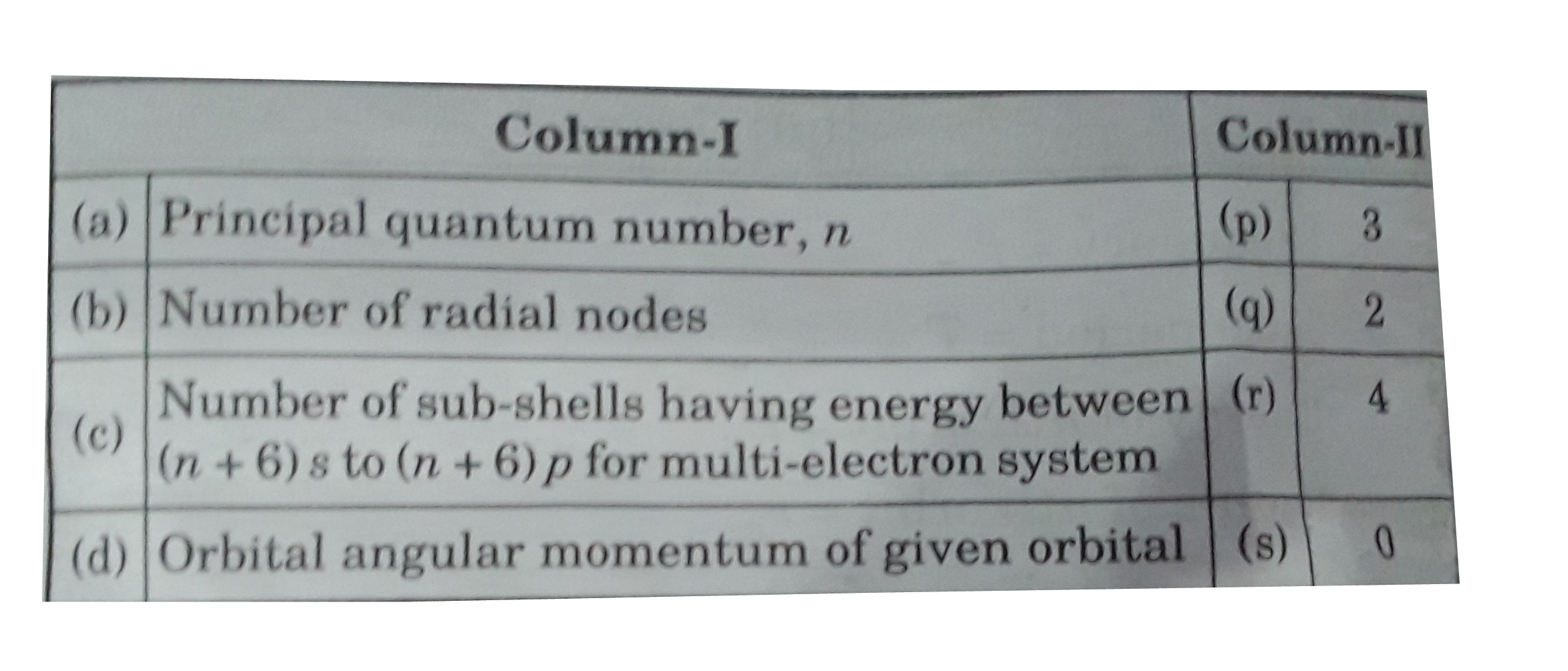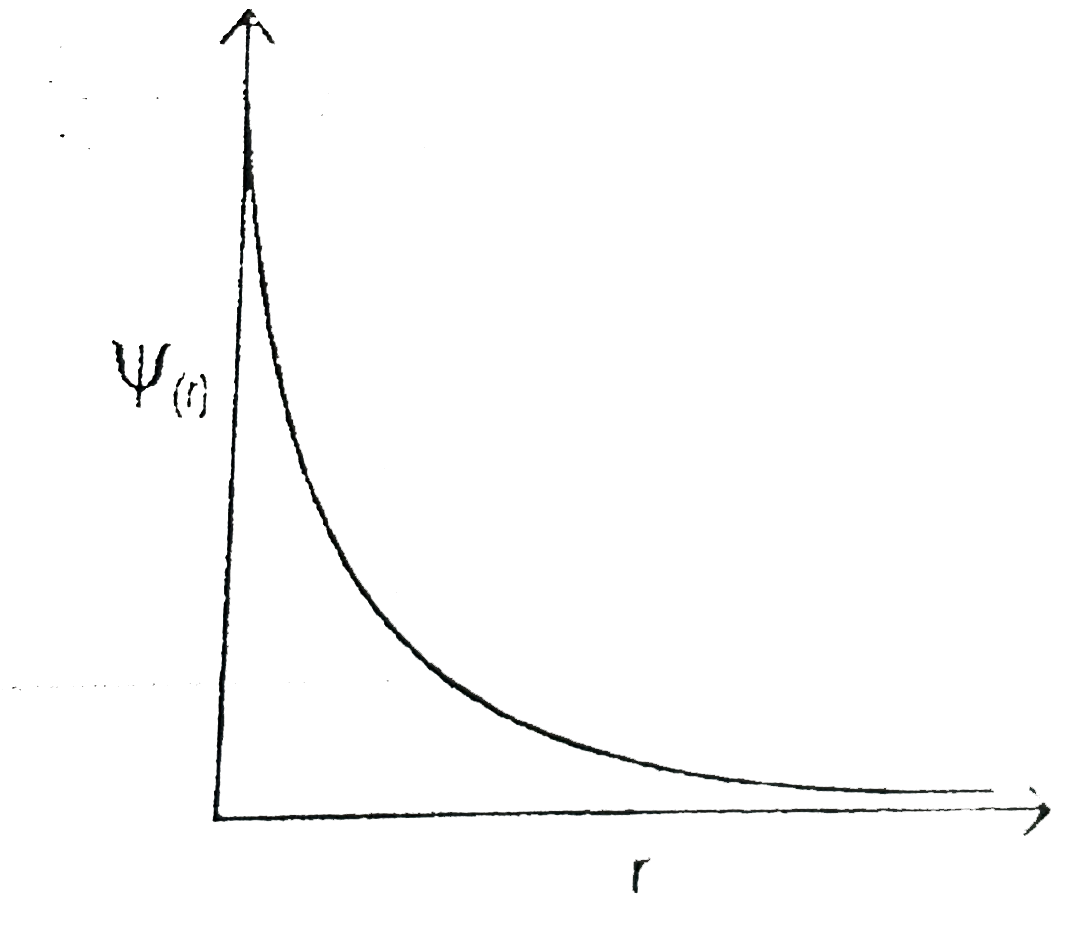Mr. Santa has to decode a number “ABCDEF” where each alphabet is represented by a single digit. Suppose an orbital whose radial wave functional is represented as :
ψ(r)=k1e−r/k2(r2−5k3r+6k23)
From the following information given about each alphabet then write down the answers in the form of “ABCDEF”, for above orbital.
Info A = Value of n where “n” is principal quantum number.
Info B = No. of angular nodes
Info C = Azimuthal quantum number of subshell to orbital belongs
Info D = No. of subshells having energy between (n+5) s to (n+5) p where n is principal quantum number.
Info E = Orbital angular momentum of given orbital.
Info F = Radial distance of the spherical node which is farthest from the nucleus.
(Assuming k3=1))
The correct Answer is:300303
Topper's Solved these Questions
- ATOMIC STRUCTURE BOOK - MOTIONCHAPTER - ATOMIC STRUCTURE EXERCISE - EXERCISE-4 (LEVEL-I)
16 Videos
- ATOMIC STRUCTURE BOOK - MOTIONCHAPTER - ATOMIC STRUCTURE EXERCISE - EXERCISE-4 (LEVEL-II)
18 Videos
- ATOMIC STRUCTURE BOOK - MOTIONCHAPTER - ATOMIC STRUCTURE EXERCISE - EXERCISE-2 (LEVEL-II)
31 Videos
- AROMATIC COMPOUNDBOOK - MOTIONCHAPTER - AROMATIC COMPOUNDEXERCISE - Exercise - 4 | Level-II
16 Videos
- BIOMOLECULES & POLYMERSBOOK - MOTIONCHAPTER - BIOMOLECULES & POLYMERSEXERCISE - EXERCISE - 4 (LEVEL II)
17 Videos
Similar Questions
Mr.Santa has to decode a number "ABCDEF" where each alphabet is respersented by a single digit .
Suppose an orbital whose radial wave functoin id respresented as
Ψr=K1.e_r/k2(r2−5k3r+k23)
From the following information given about each alphabet then write down the answer in the from of
"ABCDEF" , for above orbital .
Info A= Value of n where "n" is principle quantum number
Info B= No .of angular nodes
InfoC=Azimuthal quantum number of subshell to orbital belongs
Info D= No. of subshells having energy between (n+5)s to (n+5)p where n id principle quantum
number
Info E=Orbital angular momentum of given orbital.
Info F= Radial distance of the spherical node which is farthest from the nuclues
(Assuming K3 =1)
View SolutionΨr=k1e−r/k2(r2−5k3r+6K23)
For the above orbital match the column-I with column-II (assuming ,k3=1)

View Solution
Knowledge Check
Ψ(r)=ke−r/k1.r2(r2−k2r+k3) . If the orbital has no nodal plane , then , orbital can be :
A5dxyB5dC4dz2D4pxFor an orbital , having no planar angular nodes following the equation :
Ψ(r)=Ke−r/K'.r2(K''−r)
Identify the orbital :A4dz2B2sC3dz2D4dxyFor an orbital the graph between ψ(r) and r (distance from nucles) is :

Find the value of n+l of the orbital.A1B2C3DNone of these
If x2+y2=R2(whereR>0)andk=y''(1+y'2)3 then find k in terms of R alone.
View Solution(3k+14)k=5
If r and s represents the solutions of the equation above and r>s, what is the value of the difference r-s?
View SolutionIf (n−1)Cr=(k2−3)nCr+1,then k belong to
View Solutionk∑r=1(−3)r−1.3nC2r−1=0, where k=3n2 and n is an even integer
View SolutionProve thatk∑r=1(−3)r−1C(3n,2r−1)=0, where k=3n2 and n is an even positive integer.
View Solution
